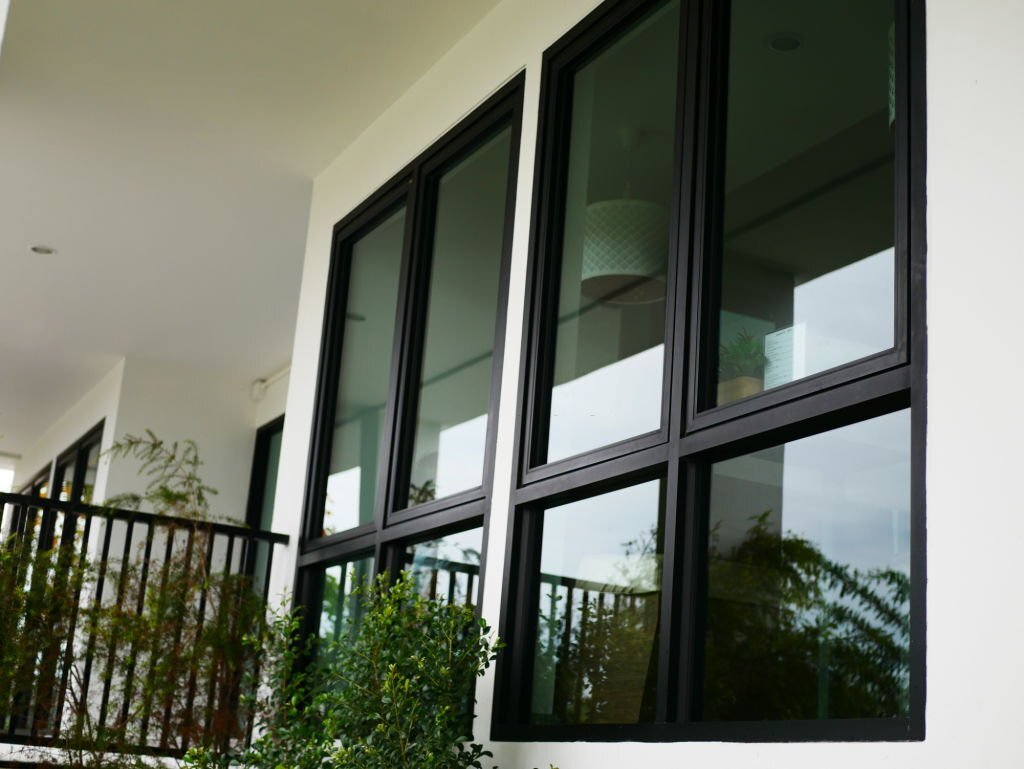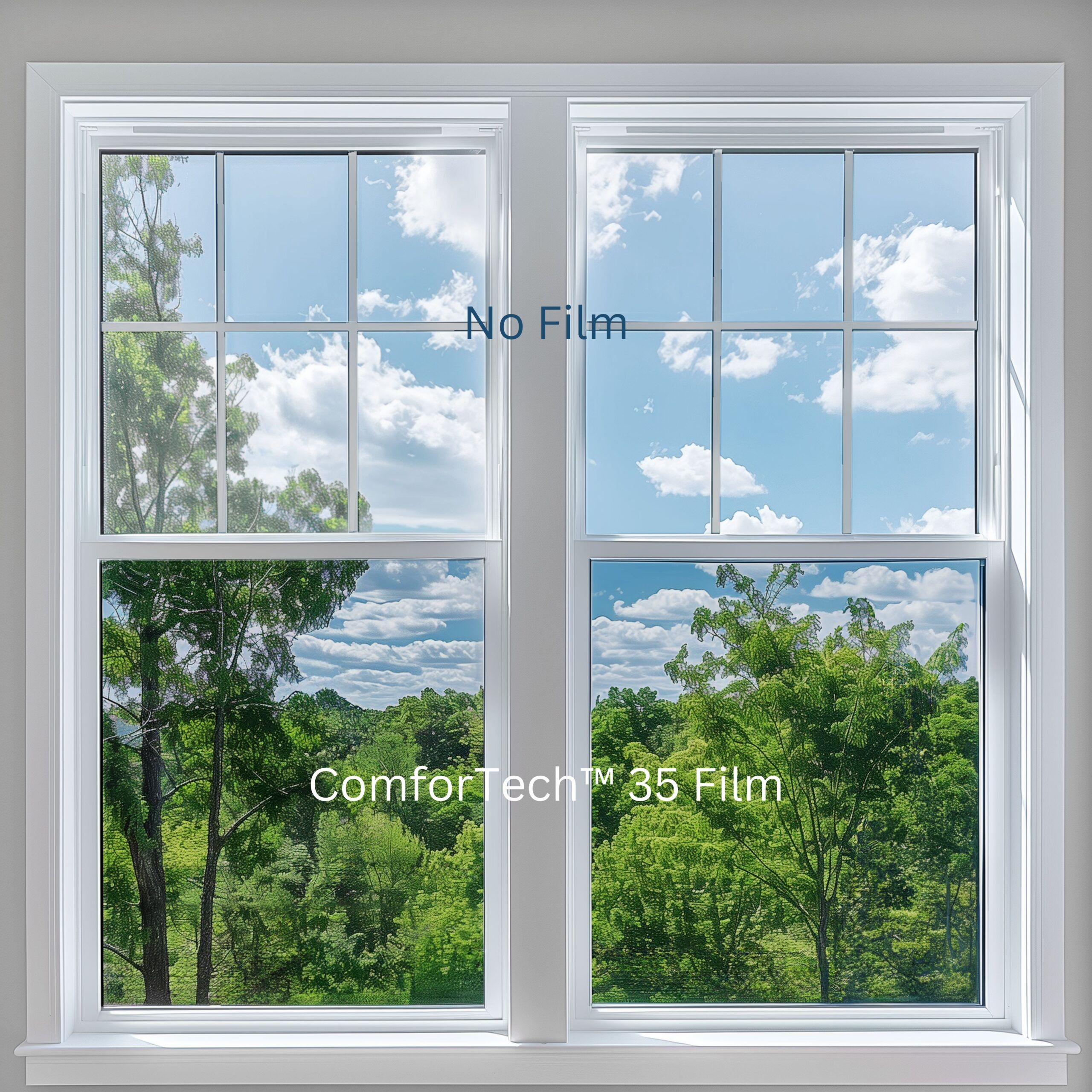Just How Residential Window Tinting Boosts Your Home's Power Effectiveness
Residential home window tinting provides a compelling option for home owners seeking to enhance power performance within their living areas. By using specialized movies to home windows, it effectively decreases warm transfer, therefore maintaining indoor temperatures and decreasing the need for too much heating or cooling.
Recognizing Home Window Tinting
Comprehending window tinting is crucial for house owners seeking to improve both comfort and power performance in their living spaces. Residential Window Tint. Window tinting involves the application of a slim movie to the inside or exterior surface of glass home windows. This film can dramatically modulate the quantity of sunshine and warmth that enters a home, thus affecting indoor climate problems
There are numerous kinds of home window tinting movies readily available, each with unique properties. The efficiency of home window tinting is usually gauged by its Visible Light Transmission (VLT) percentage, which suggests exactly how much light can pass with the film.
Benefits of Power Effectiveness
Home window tinting not just boosts aesthetics but also plays a considerable duty in boosting energy efficiency within household rooms. By decreasing warm transfer via home windows, colored movies produce a much more secure indoor climate, which can bring about significant reductions in energy usage for cooling and heating. This energy efficiency converts right into reduced utility costs, giving property owners with substantial lasting financial savings.

Furthermore, home window tinting improves the comfort of living spaces. By decreasing glare and blocking damaging UV rays, tinted home windows develop an even more positive setting, which can bring about boosted health for passengers. The defense versus UV rays likewise assists preserve furniture and floor covering from fading, adding to the long life of home things.
Just How Tinting Works
Tinting films run via a combination of sophisticated materials and modern technologies developed to control the quantity of solar energy entering a home. Mostly composed of polyester, these films commonly integrate ceramic or metallic bits that soak up and reflect warm. This dual capability allows them to substantially reduce the penetration of ultraviolet (UV) rays and infrared radiation while permitting visible light to travel through.
The performance of home window tinting is determined by its solar heat gain coefficient (SHGC), which indicates exactly how much solar power is transmitted with the home window. Reduced SHGC worths are preferable as they denote higher warm denial. Furthermore, home window colors can include a variety of shades, enabling homeowners to personalize their visual choices while boosting energy efficiency.
In addition, these movies serve as an obstacle, protecting against warmth loss during colder months by showing interior warmth back right into the living space. This thermal insulation impact matches the air conditioning advantages obtained during warmer months, contributing to a balanced indoor climate year-round. By managing solar power efficiently, household home window tinting not just boosts convenience yet additionally plays an essential duty in reducing power Visit Website intake and decreasing energy costs.
Picking the Right Color

There are numerous types of home window movies available, including colored, metalized, and ceramic. Ceramic movies give outstanding warm control without compromising visibility and are highly long lasting, making them a prominent selection.
Visible light transmission (VLT) is an additional critical variable, as it shows the quantity of natural light that can pass with the tinted glass. Home owners need to select a tint with a VLT that complements their lighting preferences while still offering appropriate glow decrease.
Furthermore, examining the solar warmth gain coefficient (SHGC) can aid figure out just how well a color can block warm from sunlight. A lower SHGC indicates far better warmth control, inevitably boosting power effectiveness.
Installation and Upkeep Tips
Correct setup and maintenance are vital parts in making best use of the advantages of domestic window tinting. To attain ideal results, it is advisable to work with a qualified professional for installment. This makes certain that the color is applied appropriately, preventing air bubbles, wrinkles, or imbalance that might compromise efficiency. Experts also use specialized devices and methods, which can improve the sturdiness and effectiveness of the color.
Adhering to installment, maintenance is necessary to lengthen the life of the home window film. It is recommended to wait at least 30 days prior to cleansing the colored home windows to allow the adhesive to cure completely.
Attending to these problems immediately their explanation can avoid further damage and keep power effectiveness. By adhering to these installation and maintenance tips, homeowners can guarantee their home window tinting continues to provide significant power financial savings and convenience for years to come.
Final Thought
To conclude, residential home window tinting works as an effective remedy for boosting energy efficiency within homes. By lowering warmth transfer and obstructing damaging UV rays, window movies add to lower power usage and enhanced indoor convenience. The option of appropriate tinting products, together with proper installment and maintenance, further maximizes these advantages. Inevitably, window tinting represents a sustainable financial investment that not only decreases utility bills however additionally advertises a comfortable living setting throughout the year.
Window tinting includes the application of a slim film to the interior or outside surface area of glass windows. By decreasing warm transfer via windows, tinted movies develop a more stable interior environment, which can lead to substantial reductions in energy usage for home heating and air conditioning.The effectiveness of window tinting is determined by its solar heat gain coefficient (SHGC), which suggests just how much solar energy is transferred via the window. By managing solar energy properly, residential window tinting not just boosts comfort however likewise plays a crucial duty in lowering power consumption and lowering utility bills.
By minimizing warm transfer and obstructing harmful UV rays, window my website films contribute to lower energy consumption and improved indoor comfort.